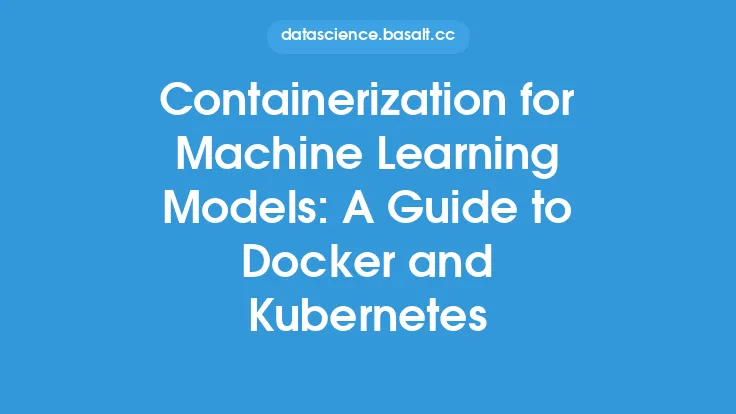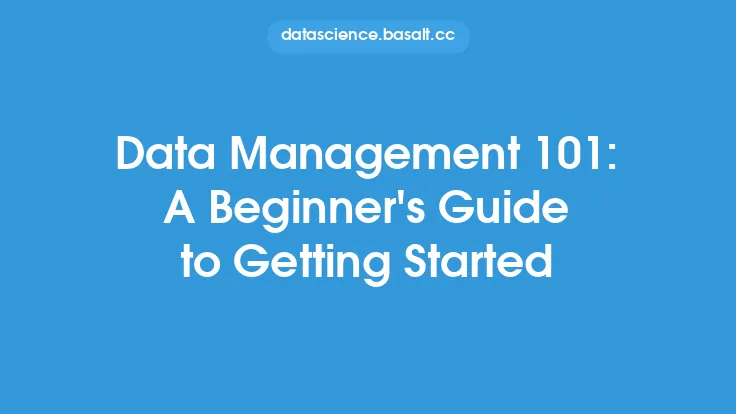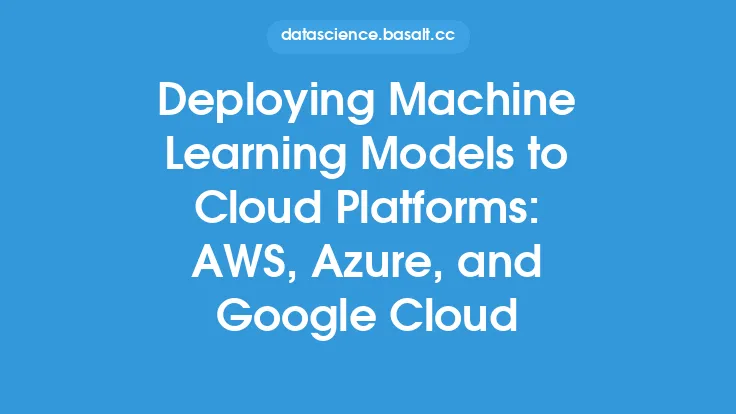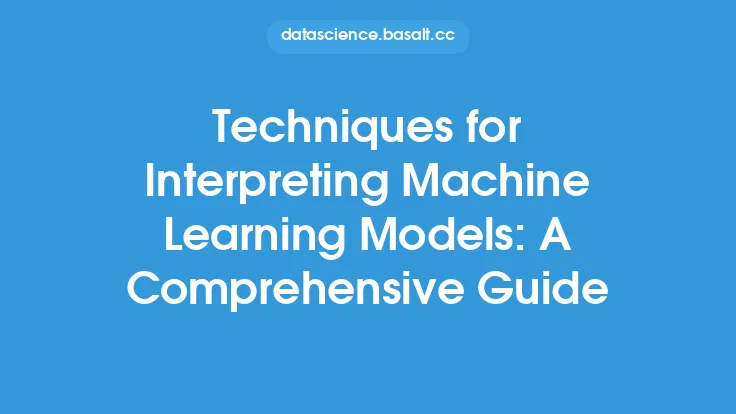Getting started with cloud computing for machine learning can be a daunting task, especially for those who are new to the field. However, with the right guidance, it can be a straightforward process. In this article, we will explore the basics of cloud computing for machine learning, its benefits, and provide a step-by-step guide on how to get started.
Introduction to Cloud Computing for Machine Learning
Cloud computing for machine learning refers to the use of cloud-based infrastructure and services to build, train, and deploy machine learning models. This approach has gained popularity in recent years due to its scalability, flexibility, and cost-effectiveness. With cloud computing, machine learning practitioners can access a wide range of computing resources, including GPUs, TPUs, and high-performance computing instances, without having to invest in expensive hardware.
Benefits of Cloud Computing for Machine Learning
There are several benefits to using cloud computing for machine learning. Some of the most significant advantages include:
- Scalability: Cloud computing resources can be scaled up or down as needed, making it ideal for large-scale machine learning projects.
- Cost-effectiveness: Cloud computing eliminates the need for upfront capital expenditures on hardware and software, reducing costs and improving ROI.
- Flexibility: Cloud computing provides access to a wide range of computing resources, including different types of instances, storage options, and networking configurations.
- Collaboration: Cloud computing makes it easy for teams to collaborate on machine learning projects, regardless of their location or device.
Cloud Computing Platforms for Machine Learning
There are several cloud computing platforms that support machine learning, including:
- Amazon Web Services (AWS): AWS provides a wide range of machine learning services, including SageMaker, which is a fully managed service that provides a platform for building, training, and deploying machine learning models.
- Microsoft Azure: Azure provides a range of machine learning services, including Machine Learning Studio, which is a cloud-based platform for building, training, and deploying machine learning models.
- Google Cloud Platform (GCP): GCP provides a range of machine learning services, including AI Platform, which is a managed platform for building, training, and deploying machine learning models.
- IBM Cloud: IBM Cloud provides a range of machine learning services, including Watson Studio, which is a cloud-based platform for building, training, and deploying machine learning models.
Setting Up a Cloud Computing Environment for Machine Learning
To get started with cloud computing for machine learning, you will need to set up a cloud computing environment. This typically involves creating an account with a cloud computing provider, setting up a virtual machine or instance, and installing the necessary software and libraries. Here are the general steps to follow:
- Create an account with a cloud computing provider, such as AWS, Azure, or GCP.
- Set up a virtual machine or instance, choosing the right type and size of instance for your needs.
- Install the necessary software and libraries, including a deep learning framework such as TensorFlow or PyTorch.
- Configure your environment, including setting up storage, networking, and security.
Machine Learning Frameworks and Libraries
There are several machine learning frameworks and libraries that can be used with cloud computing, including:
- TensorFlow: TensorFlow is an open-source deep learning framework that is widely used for building and training machine learning models.
- PyTorch: PyTorch is an open-source deep learning framework that is known for its ease of use and flexibility.
- Scikit-learn: Scikit-learn is a popular machine learning library that provides a wide range of algorithms for classification, regression, clustering, and other tasks.
- Keras: Keras is a high-level neural networks API that can be used with TensorFlow or Theano.
Training and Deploying Machine Learning Models
Once you have set up your cloud computing environment and installed the necessary software and libraries, you can start training and deploying machine learning models. Here are the general steps to follow:
- Prepare your data, including loading, preprocessing, and splitting it into training and testing sets.
- Choose a machine learning algorithm and configure it for your needs.
- Train your model, using a cloud-based computing resource such as a GPU or TPU.
- Evaluate your model, using metrics such as accuracy, precision, and recall.
- Deploy your model, using a cloud-based deployment platform such as AWS SageMaker or Azure Machine Learning.
Security and Compliance
Security and compliance are critical considerations when using cloud computing for machine learning. Here are some best practices to follow:
- Use secure protocols for data transfer, such as HTTPS or SFTP.
- Encrypt your data, both in transit and at rest.
- Use secure authentication and authorization mechanisms, such as IAM roles or service accounts.
- Comply with relevant regulations, such as GDPR or HIPAA.
Conclusion
Cloud computing for machine learning provides a scalable, flexible, and cost-effective way to build, train, and deploy machine learning models. By following the steps outlined in this article, you can get started with cloud computing for machine learning and start building your own machine learning models. Remember to choose the right cloud computing platform and machine learning framework for your needs, and to follow best practices for security and compliance. With the right tools and techniques, you can unlock the full potential of machine learning and achieve your goals.





